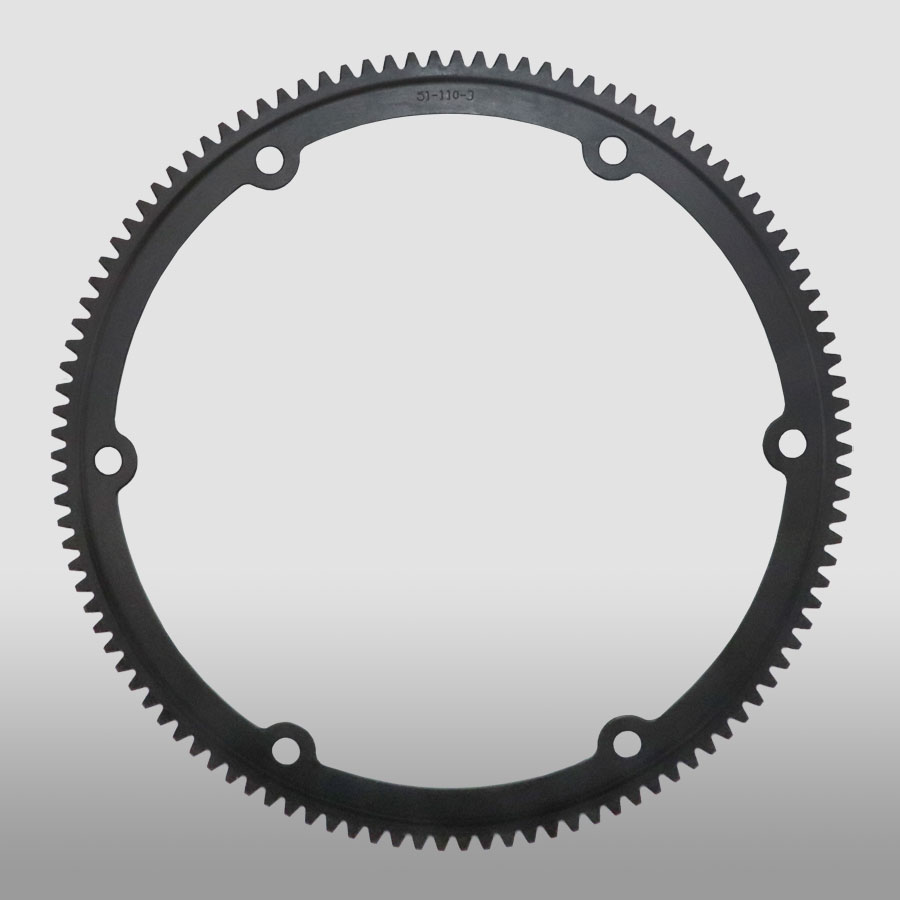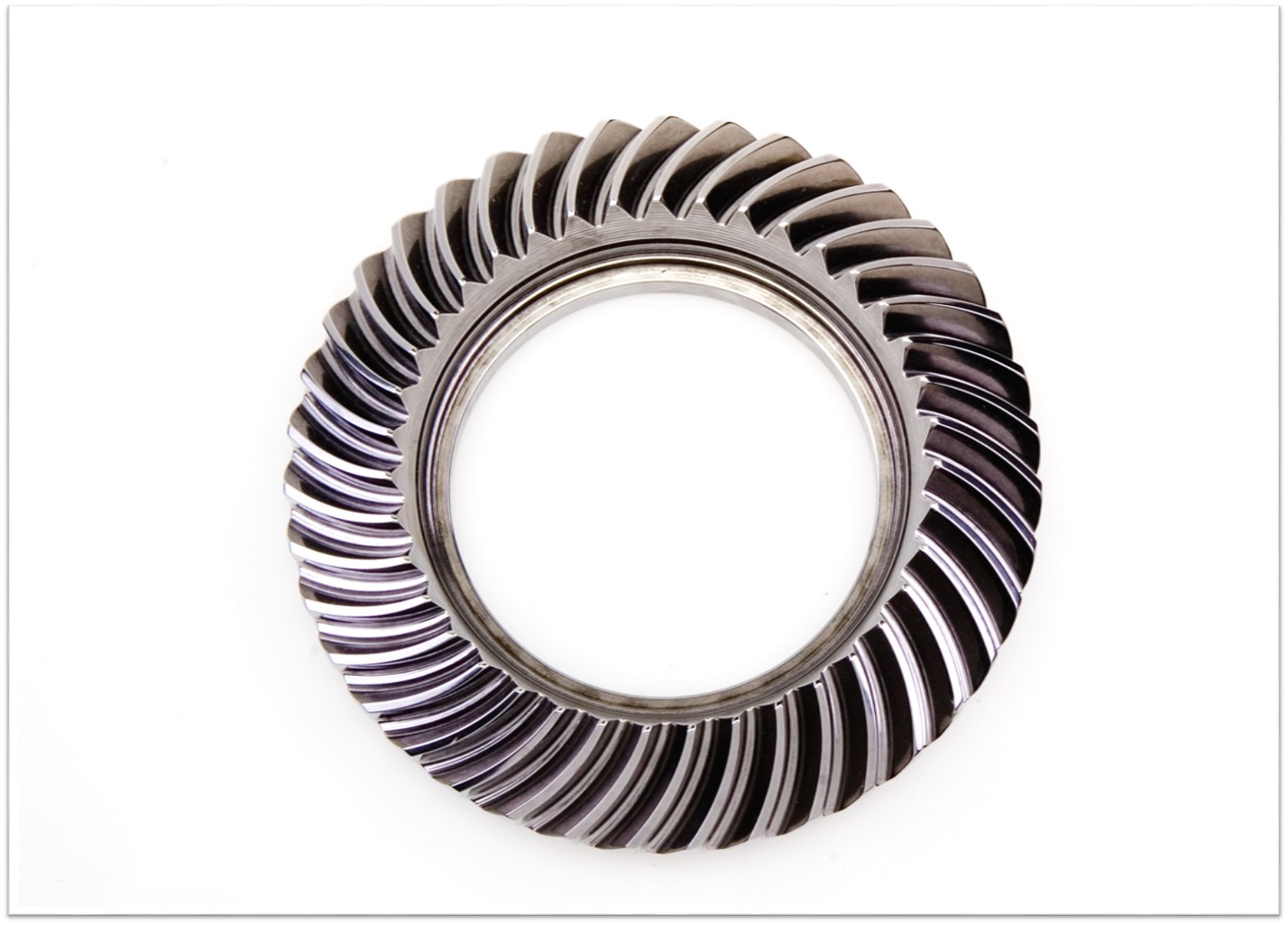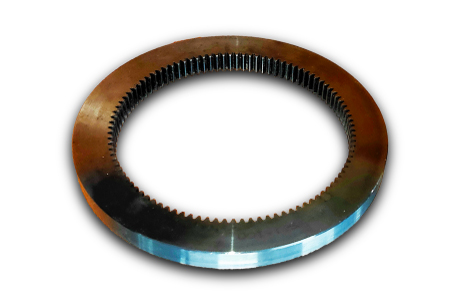Zhejiang Wenxian Gear Co., Ltd. | [email protected]
China Best Sales Factory Large Ring Gears Customized Ring and Pinion Gear worm and wheel gear
Product Description
Key attributes
Other attributes
Applicable Industries
Manufacturing Plant, Machinery Repair Shops, Construction works
Weight (KG)
2000
Showroom Location
None
Video outgoing-inspection
Not Available
Machinery Test Report
Provided
Marketing Type
Ordinary Product
Warranty of core components
1 Year
Core Components
Gear
Place of CHINAMFG
ZheJiang , China
Condition
New
Warranty
1.5 years
Shape
Ring Gear
Standard or Nonstandard
Nonstandard
Tooth Profile
spur gear/helical gear/customized
Material
Steel
Processing
casting,Forging,hobbing
Pressure Angle
20/40/50/60 Customized
Brand Name
TS
Material
steel, stainless steel customized
Precision
standard precision grade per request
Technique
casting/forging/ customized
Heat Treatment
avaliable
Tooth Profile
Internal Spur/external spur/etc
Features
Professional Production
Application
Industry Machinery
Applicable Standard
ISO/DIN
Gear precision
ordinary/ 8e/7e/6e
Service
Customized OEM
Packaging and delivery
Packaging Details
TS Packaging Details:
1. Bearing surface is covered with the anti-rust oil first; And then wrapped with the plastic film;
2. And then packed with Kraft paper and professional belts;
3. At last, with wooden box totally at the outer packing to in void the rust or the moist;
4. Packaging can be done according to customer’s requirements.
Port
China any Port
Supply Ability
Supply Ability
1500 Set/Sets per Month
Show less
Lead time
| Quantity (sets) | 1 – 1 | > 1 |
| Lead time (days) | 30 | To be negotiated |
OUR WORKSHOPS
OUR EQUIPMENTS
Technology Process
|
Material |
Carbon steel,Alloy steel |
||
|
Structure |
Forging,casting |
||
|
Type of gear |
spur gear,helical gear,Planetary Gear |
||
|
Heat treatment |
Quenching and tempering |
||
|
Process |
forging, rough machining, QT, finish machining |
||
|
Main equipments |
hobbing,CNC machine |
||
|
Module |
up to 200 |
||
|
Precision of gear |
Grinding ISO Grade 5-7 & Hobbing ISO Grade 8-9 |
||
|
Inspection |
Raw material inspection, UT,physical property test,dimension inspect |
||
|
Application |
Mining machinery, mill, kiln and other equipment |
||
OUR CERTIFICATE
OUR CUSTOMER FEEDBACK
CONTACT
/* January 22, 2571 19:08:37 */!function(){function s(e,r){var a,o={};try{e&&e.split(“,”).forEach(function(e,t){e&&(a=e.match(/(.*?):(.*)$/))&&1
| Application: | Industry |
|---|---|
| Hardness: | Hb190-Hb300 |
| Gear Position: | External Gear |
| Samples: |
US$ 100/Piece
1 Piece(Min.Order) | Order Sample |
|---|
| Customization: |
Available
| Customized Request |
|---|
.shipping-cost-tm .tm-status-off{background: none;padding:0;color: #1470cc}
| Shipping Cost:
Estimated freight per unit. |
about shipping cost and estimated delivery time. |
|---|
| Payment Method: |
|
|---|---|
|
Initial Payment Full Payment |
| Currency: | US$ |
|---|
| Return&refunds: | You can apply for a refund up to 30 days after receipt of the products. |
|---|

Are there different types of ring gears available?
Yes, there are different types of ring gears available to suit various applications and functional requirements. Here’s a detailed explanation of the different types of ring gears:
- External Ring Gears: External ring gears, also known as external annular gears, have teeth on the outer circumference of the gear. These gears mesh with an internal gear or a pinion gear. External ring gears are commonly used in applications where the gear rotation needs to be transferred to an internal gear or where a high gear ratio is desired.
- Internal Ring Gears: Internal ring gears, also known as internal annular gears, have teeth on the inner circumference of the gear. These gears mesh with an external gear or a pinion gear. Internal ring gears are frequently used in applications where the gear rotation needs to be transmitted to an external gear or where a compact gear assembly is required.
- Segmental Ring Gears: Segmental ring gears are ring gears that are divided into segments or sectors. Each segment has a portion of the gear’s circumference with teeth. These segments can be individually mounted or assembled together to form a complete ring gear. Segmental ring gears are used in applications where flexibility in gear installation or replacement is necessary, such as large-scale gear systems or machinery with limited access.
- Spur Ring Gears: Spur ring gears have straight teeth that are parallel to the gear’s axis of rotation. These gears offer simple and efficient operation with high gear ratios. Spur ring gears are commonly used in applications that require precise motion control, such as robotics, automotive transmissions, and industrial machinery.
- Helical Ring Gears: Helical ring gears have teeth with a helix angle. The helical teeth form a helical or spiral pattern around the gear’s circumference. Helical ring gears provide smoother and quieter operation compared to spur ring gears due to the gradual engagement of the teeth. They are often used in applications that demand high torque transmission, such as heavy machinery, marine propulsion systems, and power generation equipment.
- Bevel Ring Gears: Bevel ring gears have teeth that are conically shaped and intersect the gear’s axis of rotation. These gears are used in applications that require the transmission of motion and torque between shafts that are not parallel but intersect at an angle. Bevel ring gears are commonly found in automotive differentials, hand tools, and various industrial machinery.
- Planetary Ring Gears: Planetary ring gears are part of planetary gear systems, which consist of multiple gears arranged in a planetary configuration. The ring gear serves as the stationary outer gear, while other gears, such as sun gears and planet gears, revolve around it. Planetary ring gears are used in applications that require compact and efficient gear systems, such as automotive transmissions, robotics, and aerospace mechanisms.
The specific type of ring gear chosen for a particular application depends on factors such as load requirements, space limitations, gear ratios, operating conditions, and desired performance characteristics.

How does a ring gear impact the overall efficiency of a system?
A ring gear plays a significant role in the overall efficiency of a system. Here’s a detailed explanation of how a ring gear impacts system efficiency:
- Power Transmission: Ring gears are responsible for transmitting power from one component to another within a system. They facilitate the transfer of rotational energy and torque between gears, shafts, or other drivetrain elements. The design and quality of the ring gear, along with its meshing with other gears, directly affect the efficiency of power transmission. Well-designed and properly maintained ring gears minimize energy losses due to friction, misalignment, or backlash, resulting in higher overall system efficiency.
- Friction and Wear: The interaction between the ring gear and other gears or components introduces friction, which can lead to energy losses and reduced efficiency. The smoothness of the gear surfaces, the quality of the lubrication, and the design of the gear teeth profile all influence the amount of friction generated. High-quality ring gears with proper lubrication and optimized tooth profiles can minimize friction and wear, thereby improving system efficiency by reducing energy losses.
- Mechanical Losses: In any gear system, there are inherent mechanical losses due to factors such as gear meshing, rolling resistance, and internal friction. These losses can impact the overall efficiency of the system. The design and quality of the ring gear, including factors such as gear tooth geometry, material selection, and surface finish, can help minimize mechanical losses. By reducing these losses, the ring gear contributes to improved system efficiency.
- Load Distribution: Ring gears play a critical role in distributing loads within a system. They help evenly distribute the forces and torque applied to the gear system, preventing localized overloading and reducing the risk of premature component failure. Proper load distribution achieved through well-designed ring gears ensures balanced operation, minimizes stress concentrations, and optimizes the system’s overall efficiency.
- Backlash and Precision: Backlash refers to the play or clearance between the gear teeth when they change direction. Excessive backlash can result in inefficient power transmission, reduced accuracy, and increased wear. Ring gears with tight tolerances and precise manufacturing help minimize backlash, ensuring smooth and efficient operation. By reducing backlash and maintaining precise gear meshing, the ring gear contributes to improved system efficiency and accuracy.
- System Integration and Compatibility: Ring gears must be properly integrated into the overall system design and be compatible with other components. The alignment, mounting, and proper engagement of the ring gear with other gears or components are crucial for efficient operation. Misalignment or compatibility issues can lead to increased friction, wear, and energy losses. A well-integrated ring gear that is compatible with the system’s requirements contributes to improved overall efficiency.
- Maintenance and Lubrication: Regular maintenance and proper lubrication of the ring gear are essential for maintaining efficiency. Adequate lubrication reduces friction, wear, and heat generation, promoting efficient power transmission. Regular inspections, lubricant analysis, and timely lubricant replenishment or replacement help ensure optimal performance and efficiency of the ring gear and the overall system.
Overall, the design, quality, maintenance, and proper integration of the ring gear within a system significantly impact its efficiency. Through minimizing friction, reducing mechanical losses, optimizing load distribution, and ensuring precise operation, a well-designed and properly maintained ring gear contributes to improved overall system efficiency.

What are the applications of ring gears?
Ring gears, also known as annular gears or internal gears, have a wide range of applications across various industries and mechanical systems. Here’s a detailed explanation of the applications of ring gears:
Ring gears are commonly used in numerous applications where rotational motion, torque transmission, and load distribution are essential. The unique design and characteristics of ring gears make them suitable for a variety of mechanical systems. Here are some common applications of ring gears:
- Automotive Transmissions: Ring gears are extensively used in automotive transmissions, particularly in automatic and manual transmissions. They are part of the gear train that transfers rotational motion and torque from the engine to the wheels. Ring gears in automotive applications are typically large in size and designed to handle high torque loads.
- Differential Systems: Ring gears play a crucial role in differential systems found in vehicles. The differential assembly allows the wheels on an axle to rotate at different speeds while distributing torque evenly. Ring gears form an integral part of the differential assembly, enabling torque transfer and speed differentiation between the drive wheels.
- Planetary Gear Systems: Ring gears are a fundamental component in planetary gear systems, which are widely used in various applications. Planetary gear systems consist of a central sun gear, planet gears, and a ring gear. The ring gear serves as the outer ring that meshes with the planet gears and the sun gear. Planetary gear systems offer high gear ratios, compactness, and versatility, making them suitable for applications such as automotive transmissions, industrial machinery, and aerospace systems.
- Industrial Machinery: Ring gears find extensive use in industrial machinery for power transmission, motion control, and speed regulation. They are employed in equipment such as gearboxes, speed reducers, hoists, conveyors, and rotary tables. Ring gears enable efficient torque transmission, precise motion control, and load distribution in these industrial applications.
- Robotics and Automation: Ring gears are utilized in robotics and automation systems for precise motion control and synchronization. They can be found in robotic arms, automated assembly lines, CNC machines, and other robotic applications where accurate positioning and precise motion are critical. Ring gears provide the necessary torque transmission and gear reduction required for precise robotic movements.
- Power Generation: Ring gears are used in power generation equipment, such as wind turbines and hydroelectric generators. They form part of the gearboxes that convert the rotational motion of the turbine or generator rotor into electrical energy. Ring gears in power generation applications need to handle high torque loads, operate reliably, and provide efficient power transmission.
- Heavy Machinery and Construction Equipment: Ring gears are employed in heavy machinery and construction equipment, including excavators, cranes, mining equipment, and agricultural machinery. They facilitate the transmission of power and torque for various functions, such as lifting, digging, and material handling. Ring gears in these applications are designed to withstand high loads, rugged environments, and demanding operating conditions.
These are just a few examples of the applications of ring gears. Their versatility, load-carrying capacity, compact design, and ability to achieve high gear ratios make them suitable for a wide range of mechanical systems across industries.
The specific design, size, and material selection of ring gears may vary depending on the application requirements, operating conditions, and performance specifications.


editor by Dream 2024-05-07
